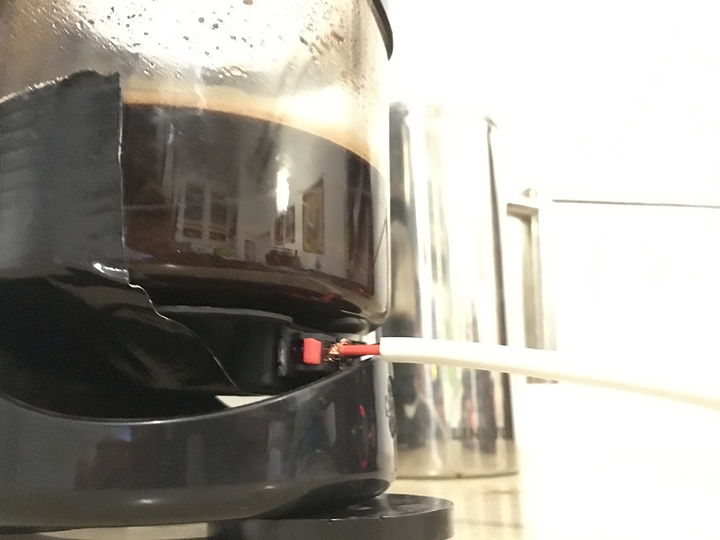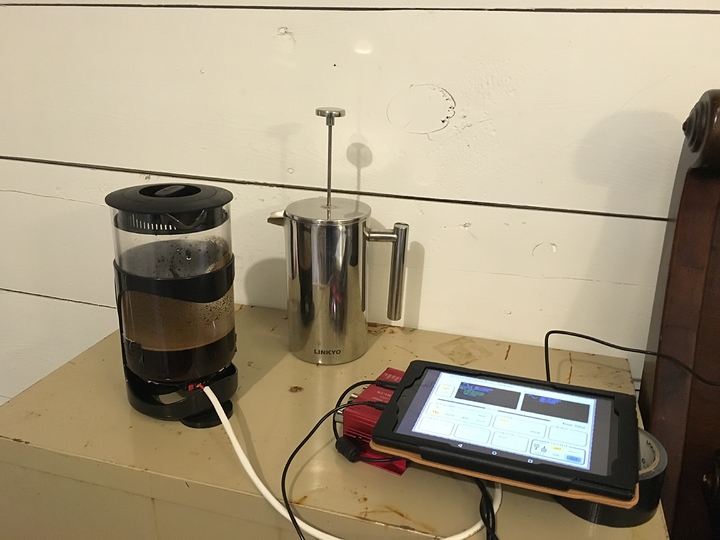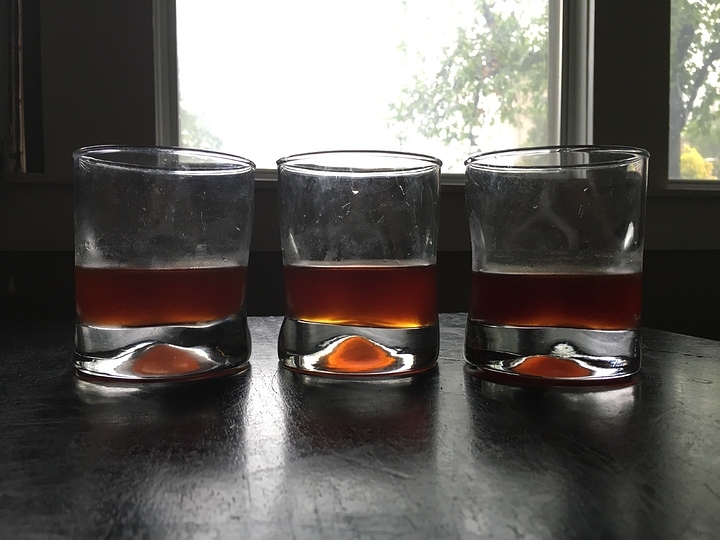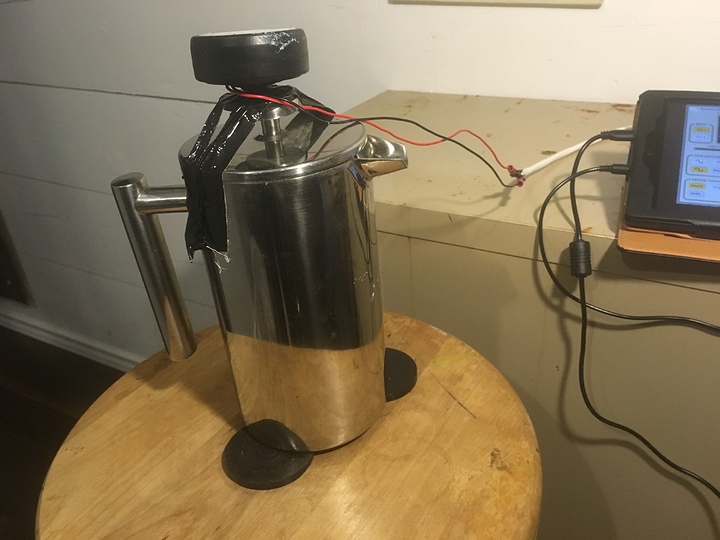I love coffee. Too much.
I like cold brew. But it takes forever to make.
But that’s why it’s so delicious… right?
Let’s find out.
I had all the gear already, so why not shake up our grounds for several hours by sticking a transducer directly on the container?
I tried it last week, and the results were… disappointing.
It was a fast and loose test; I used some grounds that I already had, just to use 'em, but they were much too fine, and the kicker was that the transducer I used was only rated for ~5w. I gave it too much power for hours, and accidentally brewed the coffee because it overheated so much. 
Yesterday, I obtained a new transducer that can handle more, so today, I’m giving it another go. Fresh, coarse grounds; two brews from the same batch of beans. One is a control pot in the same room, to rule out ambient temperature differences.
The math is simple.
To generate a signal, I found an oscillator on the play store and hooked up the amp to a tablet that I can leave for a couple hours.
Using a sine wave, I sweep the spectrum while touching the pot to approximate resonant frequencies.
Find a good resonant low freq, in this case ~240.
Find a higher one, in this case ~505.
Then, I change it to a square wave for all the added harmonic content, and repeatedly sweep it up over a half second.
The grounds vary in size, so I took a shotgun approach, hence the sweep.
Choosing a lower constant freq didn’t give me quite the vibration I wanted, especially in the harmonics.
I duct taped on the transducer to get as much energy transferred to the coffee as possible. Unfortunately, that was kind of the best of the worst ways to attach it, at least for now.
I also put it on sorbothane pads and put the assembly by itself on a wooden stool. The stool is mainly not to annoy the neighbor, by providing just enough isolation not to hear the whole thing through the ceiling (neighbor above).
So… what will come of it? I’m not sure. As I understand it, making cold brew has to do mostly with lowering the brew temperature to reduce bitterness, but sacrificing the time it takes to saturate. So, if that’s all it is, then I suppose it could work. It could also be the case that I’m still not pumping enough power into it, and it needs paint- shaker levels of power to be effective.
The hardware I’m using is basically a 12w amp, and a 20w transducer. Interference on the audio cable is of no concern, so it’s nothing fancy. Just some cheap stuff I got from amazon a while back for another purpose.
I’ll check it in a few hours, and we’ll find out.




